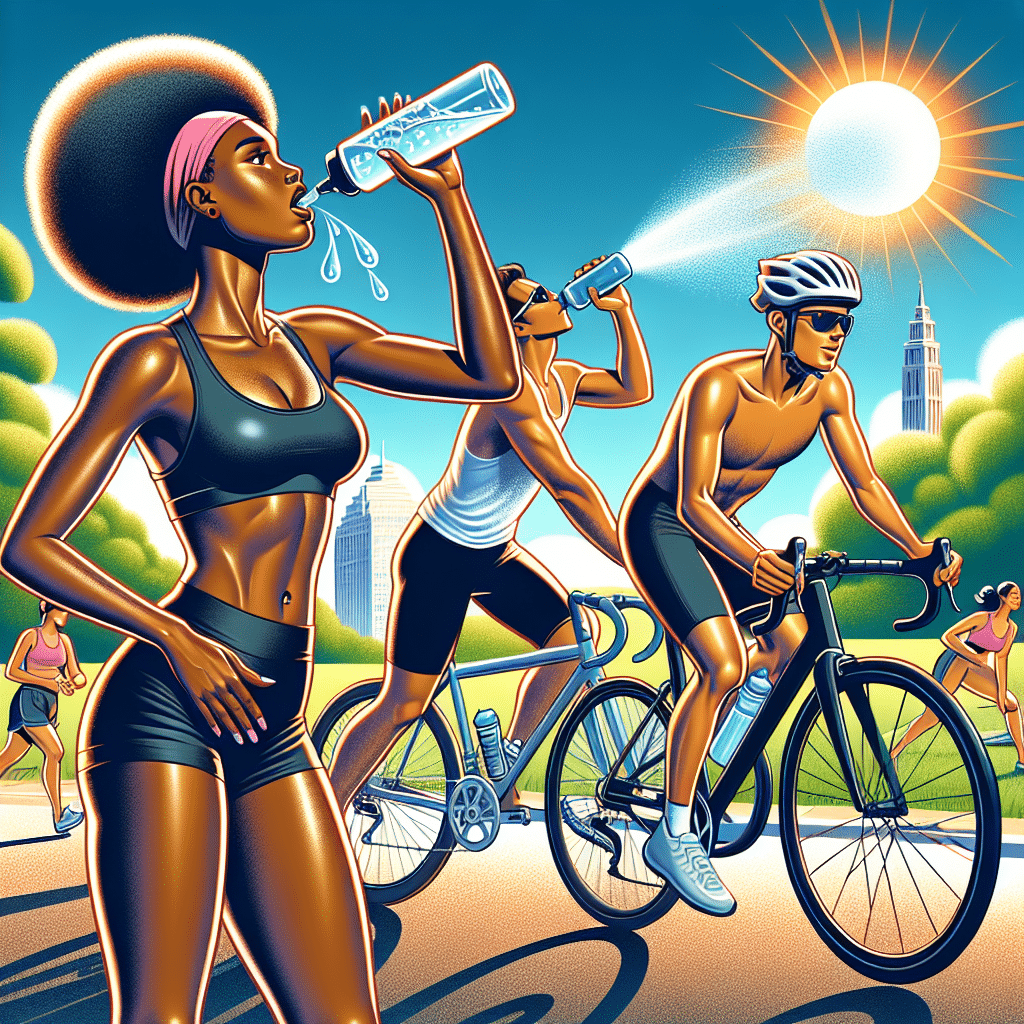Hydration Strategies for Summer Workouts
Understanding the Importance of Hydration
Staying hydrated is crucial during summer workouts due to increased temperatures and humidity. Proper hydration enhances physical performance, prevents fatigue, reduces the risk of heat-related illnesses, and aids recovery processes. The body primarily loses water through sweat, which can lead to dehydration if not replenished effectively. It is essential to recognize that hydration needs vary based on individual conditions such as body weight, workout intensity, and environmental factors.
Pre-Workout Hydration
-
Assess Hydration Levels:
Before engaging in physical activity, it’s important to check your hydration status. A simple method involves monitoring urine color; pale yellow typically indicates adequate hydration, while dark yellow suggests dehydration. -
Drink Water or Electrolyte Beverages:
Consuming 16-20 ounces of water or an electrolyte drink 2-3 hours before your workout can help enhance performance. Sports drinks, rich in sodium and potassium, can help retain fluid in the body. -
Eat Hydrating Foods:
Incorporating water-rich fruits and vegetables such as watermelon, cucumbers, and oranges into pre-workout meals can contribute to overall hydration.
Hydration During Workouts
-
Create a Hydration Schedule:
Plan to drink water every 15-20 minutes during your workout. This avoids overwhelming your system and ensures steady hydration. The ideal amount varies, but aiming for 7-10 ounces can be effective depending on the intensity of your activity. -
Watch for Signs of Dehydration:
Be vigilant for signs such as dizziness, dry mouth, excessive thirst, and fatigue. If you experience any of these symptoms, take a break and hydrate immediately. -
Opt for Electrolyte Solutions:
For workouts lasting longer than an hour, consider an electrolyte drink to replenish lost salts and minerals. Look for beverages containing sodium, potassium, calcium, and magnesium, as these are critical for maintaining optimal muscle function. -
Use Hydration Packs:
For outdoor activities like running or cycling, consider using a hydration pack. This allows you to sip water without interrupting your workout rhythm.
Post-Workout Hydration
-
Refuel with Fluids:
After exercising, drink 16-24 ounces of water for every pound lost during the workout. Weighing yourself before and after can help determine fluid loss accurately. -
Incorporate Recovery Drinks:
Consider recovery drinks that combine carbohydrates with protein, as this aids in muscle recovery. Many recovery drinks also contain electrolytes to aid rehydration. -
Hydrating Foods Post-Workout:
Consuming snacks rich in water content not only supports hydration but also provides essential nutrients for recovery. Foods like yogurt, smoothies, and protein bars can be excellent choices.
Tailoring Hydration Strategies to Individual Needs
-
Consider Body Weight and Activity Level:
Hydration needs differ significantly based on individual factors. An athlete weighing 150 pounds may require about 50 ounces of fluid daily, increasing with additional physical activity. -
Environmental Adjustments:
Heat and humidity can dramatically affect sweat rates. In very hot conditions, individuals may need to double their fluid intake to maintain balance. -
Age and Fitness Level:
Older adults may have reduced thirst perception, making it imperative to establish a regular drinking habit. Similarly, highly trained athletes may have higher electrolyte loss due to intense sweat rates.
Hydration Innovations
-
Smart Water Bottles:
Technology has progressed with hydration tracking smart bottles that remind users to drink water at regular intervals, ensuring consistent hydration. -
Hydration Apps:
Many mobile apps can help set hydration goals and track daily fluid intake. These tools provide personalized recommendations based on physical activity and environmental conditions. -
Flavored Water Options:
If plain water is unappealing, infusing water with fruits such as lemon, berries, or herbs like mint can improve the flavor and encourage increased consumption.
Hydration Tips for Different Activities
-
Running:
Focus on electrolyte-rich drinks during long runs. Utilize ultra-lightweight water bottles or belts for easy access while moving. -
Cycling:
Make hydration stops every hour during long rides, and utilize hydration packs for hands-free sips. Eating hydrating fruits during breaks improves overall hydration and energy levels. -
Team Sports:
Coaches should implement hydration breaks every 20-30 minutes during practice or games to encourage athletes to drink water consistently. -
Yoga or Pilates:
While these activities may not induce as much sweating, staying hydrated is equally important for muscle recovery and flexibility.
Conclusion
Adopting effective hydration strategies can significantly enhance your summer workout performance. Understanding your body’s unique needs, implementing a hydration plan, and responding to environmental factors ensures you stay hydrated and ready to perform at your best. Whether you’re training for a competition or enjoying recreational activities, making hydration a priority will contribute significantly to your overall fitness goals.
